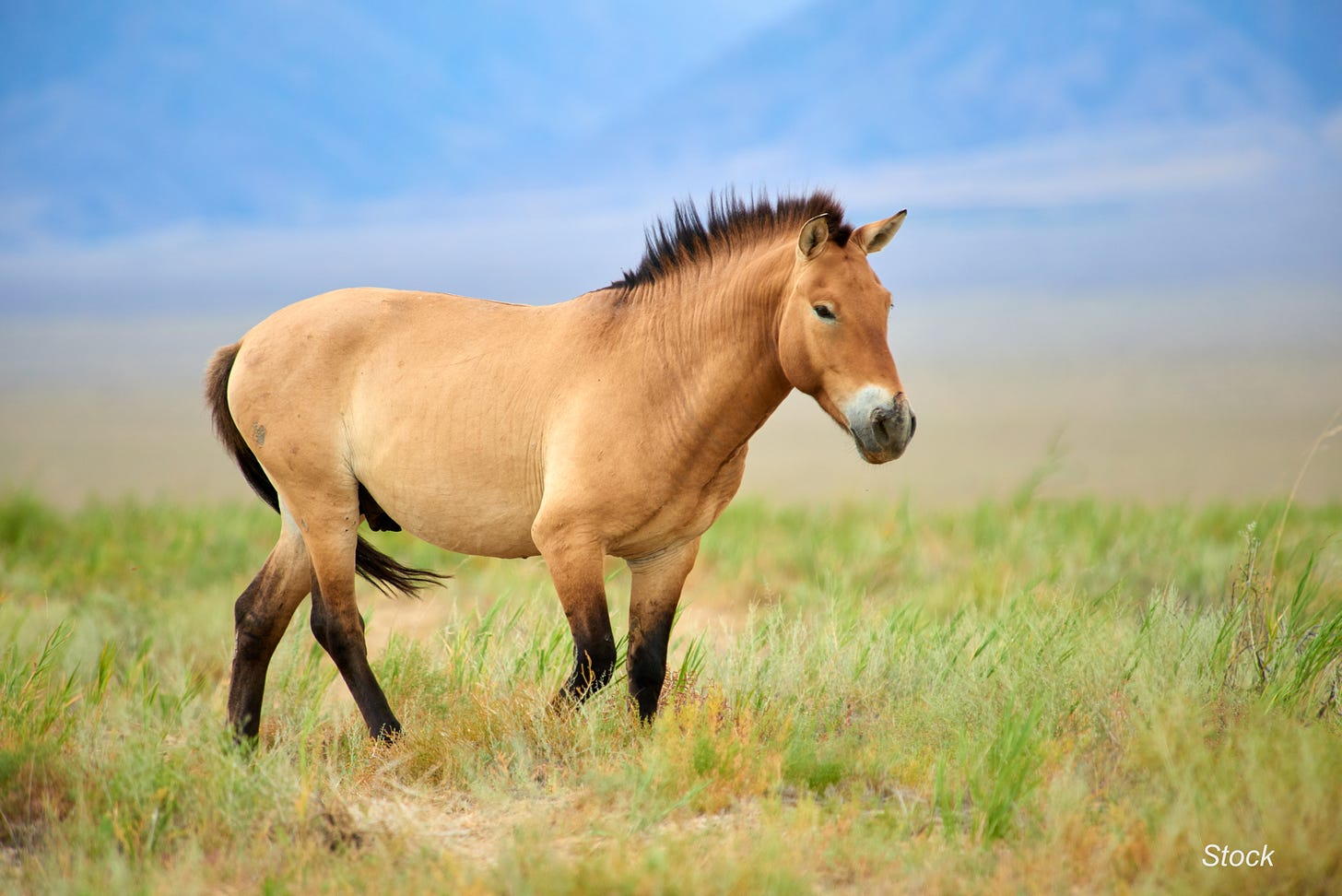Rewilding Stories: The Last Wild Horses Return Home
An occasional series on efforts to rewild the Earth
The little beauty in this photo is a Przewalski’s horse, a member of the last remaining, never-domesticated horse species on Earth.1 You can call them P-horses if you like; the scientists do. Or maybe try takhi, their Mongolian name.
The entire remaining population of this pony-sized wild horse at one time consisted of 12 individuals, all in captivity. The International Union for the Conservation of Nature (IUCN, the international body that tracks species status) listed the P-horse as “extinct in the wild” in the 1960s.
A few years ago, however, scientists reported that the Przewalski’s horse had rebounded, thanks to a captive breeding and relocation program. There are now over 2,000 takhi worldwide, with a few hundred living in the wild in Mongolia and northern China. The San Diego Zoo recently announced the birth of the first takhi born in its care since 2014, one of only 4 takhi foals delivered in North America in the past year. Here he is.
P-horses are not yet out of the woods. Climate change may impact their homelands in unexpected ways, making survival more difficult. They could interbreed with feral horses, diluting their bloodline such that they would no longer be considered a distinct species. And, the breeding programs must contend with a big barrier to recovering a species from near-extinction — a lack of genetic diversity that could lead to inbreeding and subsequent health problems.
In an interesting twist, cloning may offer at least a partial solution to that last: the San Diego Zoo successfully cloned a male P-horse whose DNA was cryopreserved several decades ago. He was born in 2020 to a surrogate quarter-horse mom and duly named Kurt.2 His DNA, lost to the species when it bottlenecked down to 12 individuals, can now be bred back into the population, increasing genetic diversity and hopefully, fitness within the species.
The captive breeding and later release of these animals (not to mention the cloning) bring to mind the debate about whether you can truly call certain species “wild” any longer. For decades, all of the living P-horses were held in captivity, and although never domesticated for human service, they certainly only exist now because we captured and managed them. I don’t have the answer, although my instinct suggests I honor their renewed wildness. Where that wildness was temporarily eliminated, it was down to human choices and actions. And now they’re roaming free across the steppes again. Should we diminish that rare victory by parsing labels?
More at Smithsonian Magazine.
The American mustang and other well-known “wild horses” are actually considered feral rather than wild — they descended from domesticated horses that escaped and chose to live free rather than go back into human service (and really, who could blame them). But, still, a label’s just a label.
After a conservation scientist named Dr. Kurt Benirschke.








Thanks for this, Rebecca.
I have heard some people use the term "free" rather than "wild." Nicholas Wilkinson has given a lot of thought to these questions. You might enjoy his site, Traps, Cages and Spells. https://nicholaswilkinson.substack.com/
In Australia people are trying to save feral donkeys. It turns out they help the landscape in numerous ways. Who would guess?